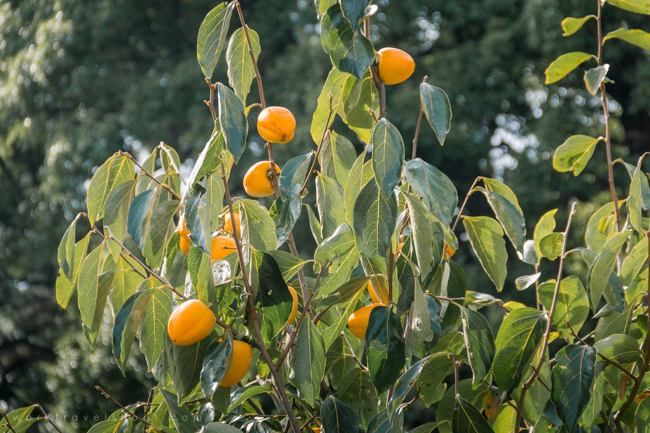The Tokyo Imperial Palace 'complex' is a park-like area in Chiyoda, Toyko. It was our first destination during our trip in Japan last October 2017.
(See here our overall 7-day itinerary: Japan Travel Itinerary for 7 Days: Tokyo, Kyoto, Osaka)
It has several gates and we entered through the Ōte-mon Gate (大手渡櫓門) which leads to the East Gardens.
The East Gardens
The East Gardens is the location of the former Edo Castle's innermost circle of defense.
✔️ Open Hours ⌚
The East Gardens (東御苑 Higashi-Gyoen ) is open from 9:00 am to 4:30 pm, and entry is allowed until 4:00 pm.
✔️ Admission Fee 🎫
Entry to the East Gardens is free of charge.
✔️ Open and Closed Days 📆⛔
1. The Gardens are open on the following days. However the Gardens are closed in the period between 28 December and 3 January and may be closed due to Court functions and other reasons:
(1) Wednesdays
(2) Thursdays
(3) Saturdays(4) Sundays
(5) National Holidays (excluding the Emperor's Birthday, 23 December)
(6) Mondays immediately following the National Holiday which falls on Sunday
(7) Tuesdays (excluding Tuesday immediately following (5) and (6)
2. While you are in the Gardens, please keep the plastic ticket which you will receive at the gate. Please return the ticket to the officer at the exit gate.
East Gardens' Areas of Interest
✔️ Ōte-mon Gate
✔️ Ōte Rest Station
✔️ Doshin-bansho Guardhouse
✔️ Hyakunin Bansho Guardhouse
✔️ O-bansho Guardhouse
✔️ The Stonewalls
✔️ Botanical Garden
✔️ Base of the former Edo Castle Tenshudai
📍 Ōte-mon Gate
I honestly didn't pay much attention to this area but now I wish I looked closer and intently on the gate after reviewing the photos. The Ōte-mon Gate is 'masaguta' gateway and a feature of Japanese castles.
📍 Ōte Rest Station
We thought it was just a souvenir shop but I found out that this is where the park's map and information can be acquired. Again, we just walked past through it and went on. You may rest here if you get tired.📍 Doshin-Bansho Guardhouse
Doshin-bansho Guardhouse is one of the three remaining guardhouses of the Tokugawa Shogunate's Edo Castle.
When daimyos (feudal lords) attended ceremonies in the Honmaru (the main compound), their retinues were not allowed in and had to wait around here for their masters to return from the ceremony.
In this guardhouse members of doshin, a relatively low ranking warrior class of the Shogunate, kept watch on the retinues.
📍 Hyaku-nin Guardhouse
The guardhouse positioned in the most critical point to guard the entrance to the Honmaru (the main compound) of the Tokugawa Shogunate's Edo Castle.
Hyaku-nin means 100 persons. 4 teams, each consisting of 120 guards, stationed the house in shifts day and night.
The Hyaku-nin Bansho is one of the three remaining guardhouses of the Castle.
📍 O-bansho Guardhouse
"This gardhouse is believed to have played a crucial guard role, since it was the final checkpoint. It was strictly guarded by samurai guardsmen (Yoriki and Doshin) of higher rank than those at other guardhouses." *📍 The Stonewalls of Honmaru-Nakanomon Gate
There are folks who love walls and taking photos in front of them.
And for the Japanese, the stonewall especially within this area are very important due to their historic value. For the restoration (as described on the information tables below), they implemented three-dimensional laser survey technology to explore the masonry configuration and the remains and be able to restore the stonewalls carefully.
📍 Botanical Gardens
The East Gardens in general is a host for a lot plant species that a tropical guy like me is not familiar with. It was my first time to actually see persimmon fruits still on trees.Old varieties of fruit trees once cultivated for food are planted here. This orchard was created on the site of the Castle of Edo based on His Majesty the Emperor's idea that visitors would be able to enjoy the cultivars popularly cultivated in the Edo era (1603-1868).
Five Japanese apple and five persimmon cultivars are planted in this zone. Of these, Their Majesties the Emperor and Empress personally planted two Japanese apple cultivars in March 2009.
📍 Tokagakudo Concert Hall
This octagonal hall was built in 1966 to celebrate the 60th birthday of the Empress Kojun His Majesty the Emperor's mother. The roof is in the shape of a flower of clematis. (I immediately googled whether clematis is related to 'kamatis', the Filipino for tomato. Nope.)
The mosaic images on the walls include birds, the sun, moon and stars, pine, bamboo and plum trees, and the musical notes.
Though the hall is not open to the public, it hosts concerts performed by the Music Department Orchestra, distinguished graduates of music universities and others in the presence of the Imperial Family.
📍 Base of the Former Edo Castle Tenshudai (天守台)
I think this is the highlight or main feature of the East Gardens. The site is the foundation of the former Edo Castle which was the residence of the Tokugawa shogun.Here's a map for a bird's eye view of the base:
The Surrounding Gardens and Pathways
Here are some more photos from the East Gardens.

Conclusion
It may be recommended to visit the East Gardens in the afternoon to relax after spending some time in the busy and loud parts of city. Also, would be great to spend longer time and actually get a map to locate the actual key points. There are some gardens that we didn't see which I bet would look great especially during autumn.
This jump-started our adventures for the day which, after this, will continue at the Tokyo Station, followed by Shibuya and then Odaiba.
-












































